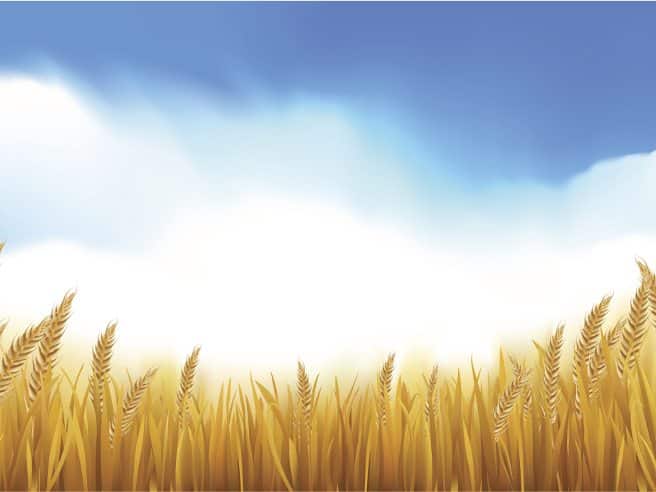This is Part 2 of a two-part feature. Read Part 1 here.
Models and Misconceptions
One model developed by the task force is a producer-facilitated royalty collection system. Royalties are collected on harvested material of varieties registered after Feb. 27, 2015, at delivery points. The royalties generated would be distributed to breeders based on a variety’s market share, possibly using existing collection systems.
However, under this system, if a royalty is collected on seed, no royalty would be collected on harvested material.
“One of the concerns I’ve heard from farmers is that they will get hit twice — so they pay the royalty on seed and then pay the end-point royalty as well,” says Simon Ellis of Ellis Seeds. “Under the system, this wouldn’t be allowed — it would be one, but not both.”
This is one of the misconceptions Ellis quashes whenever value creation comes up in his discussions with producers. Another fact Ellis often clears up is the difference between a royalty on seed and a tax.
“I’ve heard people calling it a seed tax — that’s completely incorrect. Farmers are seeing there’s going to be money coming off their cheques at the end of the season, and they don’t want that. But we need to all work together to make sure this industry stays competitive with the rest of the world.”
On this point, Armstrong is clear. “Royalties are not a tax,” she says. Rather, they are payments made to developers, in this case seed developers, for the use of their intellectual property (i.e. specific plant varieties).
Ellis, a fourth-generation farmer and independent seed grower, says he supports a royalty collection system that increases investment in cereal breeding. He also believes it’s important seed developers are compensated for the varieties they create, and he stresses farmers have a choice when it comes to which varieties they plant on their farms.
“There’s still varieties outside UPOV 91, and they’re quite good. Farmers can still plant Brandon wheat, which is a top variety right now. They can keep growing [those varieties] until they see that there’s a variety under UPOV 91 that will give them huge returns on their farms, and they’ll start growing [that variety] because it makes sense for their farms,” says Ellis.
A royalty collection system would only apply to varieties registered after Feb. 27, 2015, thus farmers who don’t attach value to the newer varieties can continue to use older varieties, says Armstrong.
“For those who are opposed to private involvement in cereal variety development, there’s nothing that forces any individual farmer to buy a particular variety from a particular program,” she adds.

The other value creation model put forward by the working group is a royalty collection system enabled by contracts. In this case, breeders, or their representatives, would use contracts when selling certified seed of varieties registered after Feb. 27, 2015. This system would either restrict the use of farm-saved seed or collect royalties on the farm-saved seed used (i.e. trailing royalties).
Farmers can save a portion of their crop to seed on their own farms, but they would report it and pay a royalty on what they used as seed, says Armstrong.
Guiding Principles
While developing the value capture models, the Working Group also identified the need for the continued viability of the pedigreed seed system and producer check-offs, for their purposes. In addition, continued public sector investment in cereals research and development as well as ensuring the needs of stakeholders from Eastern Canada are also imperative.
Maintaining the pedigreed seed system, and its long history of providing Canadian farmers with high-quality seed, is particularly important to Ellis.
“Seed is the foundation of the quality products we ship around the world. It’s important we keep the seed industry strong, so that farmers have access to clean, pure and safe products that have assurances, stringent testing and standards behind them. Farmers’ risks are lower and they produce a safe and affordable product as well,” he says.
Moving the Profitability Needle
Farmers are growing their profits through yield gains as opposed to increased grain commodity prices, says Ellis, which will come from new and improved cereal varieties. However, it’s the compound nature of yield growth that really moves the profitability needle for farmers, says Gray.
“If farmers would like prices to be 10 per cent higher, a 10 per cent yield increase will get you that. The tricky part is understanding that growth in yield is cumulative,” says Gray.
“When we think about increasing the rate of yield growth from 0.5 per cent to one per cent a year, people think they’re 0.5 per cent better off, but that’s the first year. Ten years down the road, they’re generating five per cent more per year than they would otherwise. That makes a big difference over time,” says Gray.
There are many versions of successful end-point royalty systems around the world. However, a model that works well for one country may not be easily superimposed on another because each country has different situations and needs, says Steve. “End-point royalties are in place in Europe and Australia, and they work well. It’s an efficient way to do it. But [in Canada] there are different considerations,” says Steve.
However, the collection systems from other countries can be instructive. Although the UK, France and Australia have successfully implemented different royalty collection systems, Gray says France’s model of financing variety development through private breeding, uniform end-point royalties, large public investment in applied research and use of public-private research clusters brought about the most innovation in the shortest amount of time, when compared with the other two countries.
“If all varieties have the same royalty rate, then farmers have an incentive to always grow the best varieties. They can’t save money by growing their old varieties. And the funding kicks in as soon as they set up the system,” says Gray. “It’s more pragmatic. It creates a price that is, by nature, not going to be exorbitant, but not zero. The revenue would start soon after, and it’s a simple system to implement and enforce.”
Team Canada
The upcoming formal consultation process on value creation in cereals, which will gather all stakeholder opinions, is the next important step, says Armstrong. “We, and I mean the whole system, need some means of evaluation, to come up with a recommendation that, at least, most could live with. Any recommendation would need to ensure the whole value chain benefits,” she says.
Gray says more producer input is needed, as they will likely have the most sway over the federal government when it comes to legislative changes.
“There needs to be a push from producers to say they actually want a system that they think is equitable and will accomplish their goals of getting better varieties out there,” he says.
Although they may be far from consensus on a value capture model for the cereals sector, on one point all can agree: industry stakeholders need to work together.
“Ultimately, it comes down to making sure the industry is going to be strong, and that we’re working as a team. The farmers are the foundation — they grow everything. But we need the breeders supporting the farmers, and we need to make sure the breeding programs stay vibrant, and we need our grain buyers to have access to high-quality product, so they must work with the breeders to tell them what they need,” says Ellis.
“We’re all a team. We must ensure, as a team, that Canadian agriculture stays strong, vibrant, and competitive in the world marketplace,” he says.












